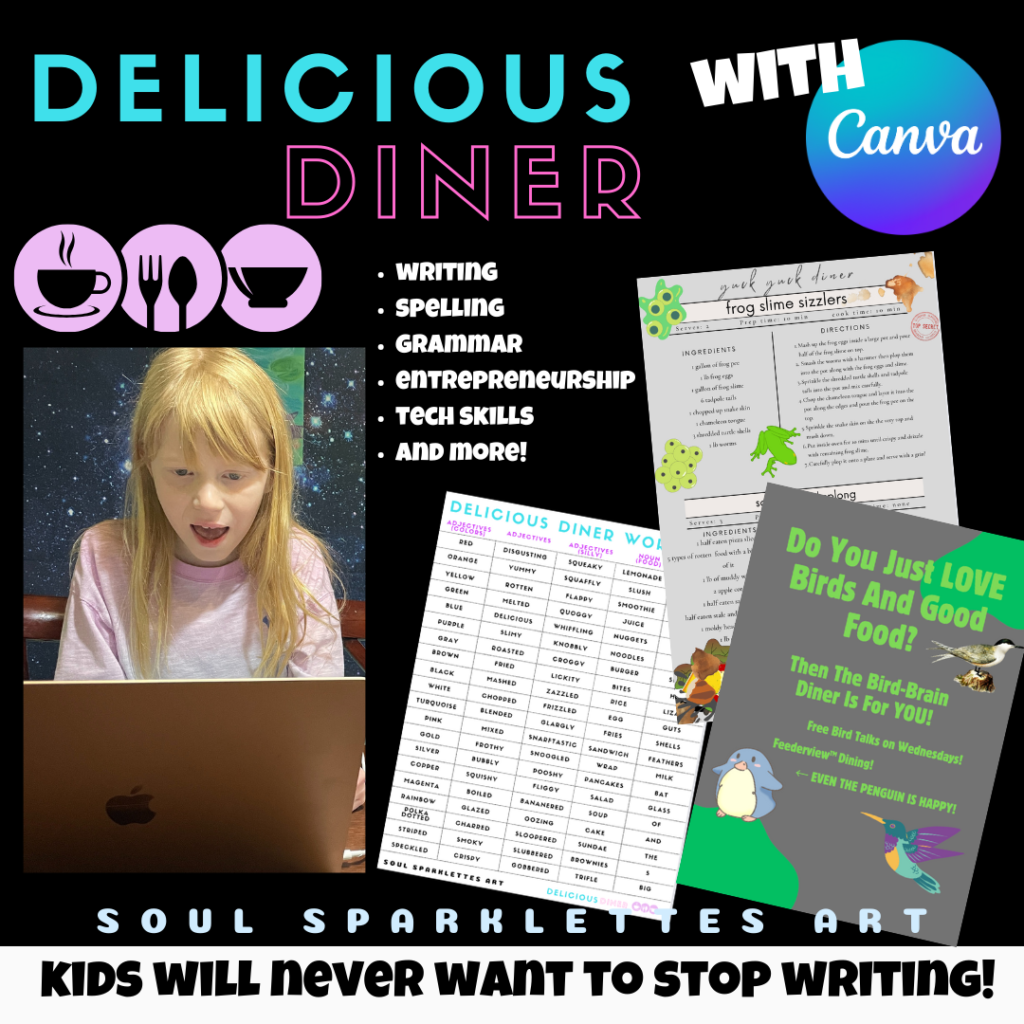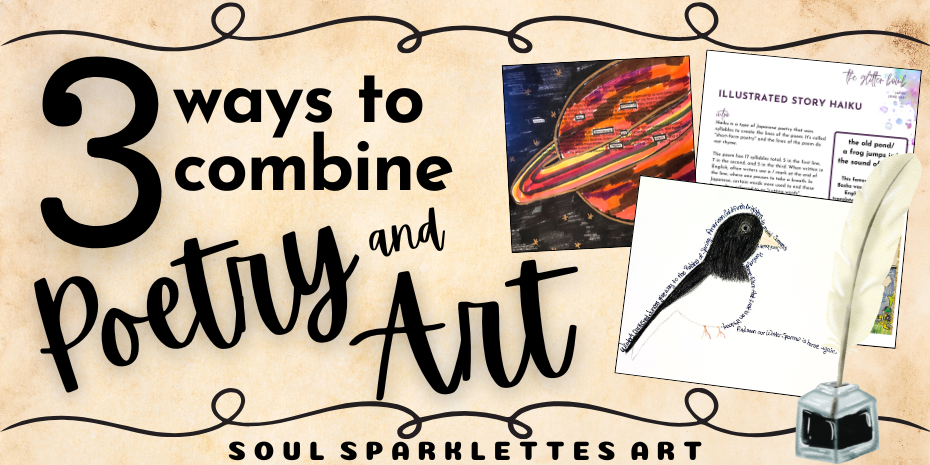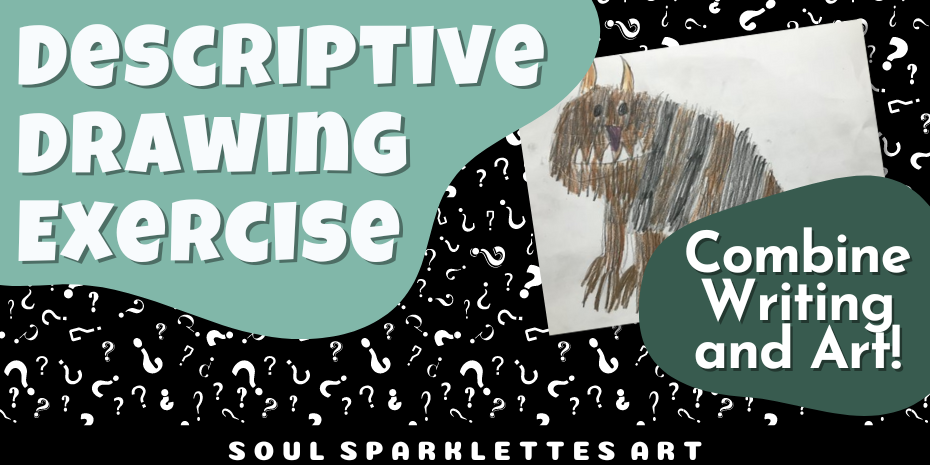Nothing lights kids up like a big, dusty tome of old poems, am I right?
They skip to the table and beg to write their own epics!
No?
I want to show you how to entice kids to dig in – combine poetry with art!
Poetry and art go together like peanut butter and jelly – they compliment each other for an improved experience! So why not try bringing poetry to life through art.
Here are three ways that you can effortlessly expose your students to poetry through art – and have fun at the same time.
1. Concrete Poetry
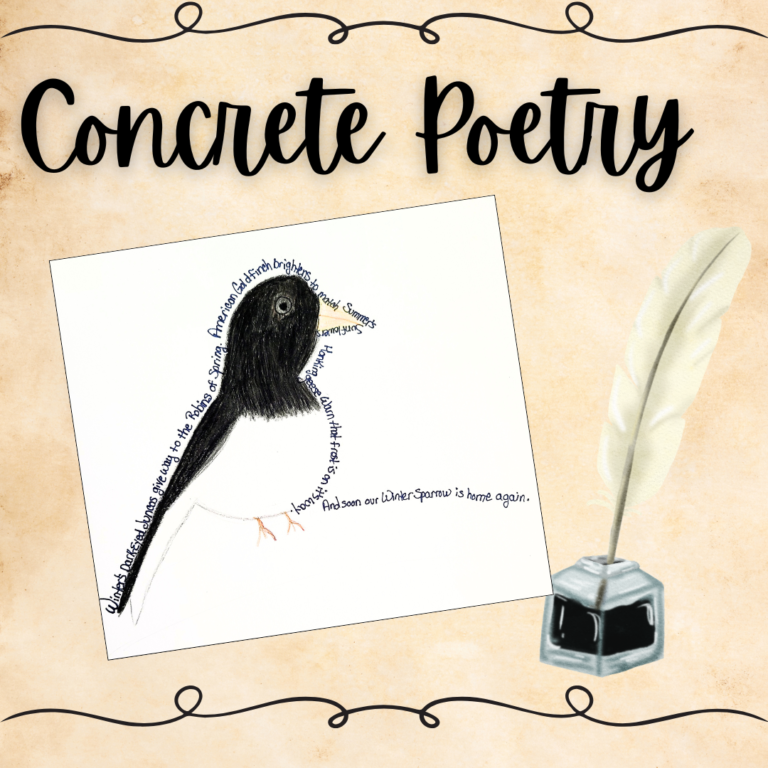
What if the poem didn’t have to be written in lines or stanzas?
In concrete poetry, the words are written along the outline of an image. Kids are drawn in right away as their eyes curiously follow the words around the page. Much more interesting than a page full of text!
To teach this type of poetry, a topic is the place to start. Have students draw a simple outline of the thing their poem will be about.
Then, on a separate sheet of paper, students can brainstorm and come up with a short poem about the item they drew. Help them match the length of their poem to the drawing – not too long or short!
Decide on a starting point and let kids write their poem around the outline of their drawing. The words can even trail off and take the shape of another item in the picture or the poem. Add details to the drawing and background for a finished look.
Tip: Encourage them to start somewhere other than the left side of the paper, and see where it goes.
Words that take on shape and images add a multi-sensory aspect to poetry, but kids just see it as FUN!
2. Blackout Poetry
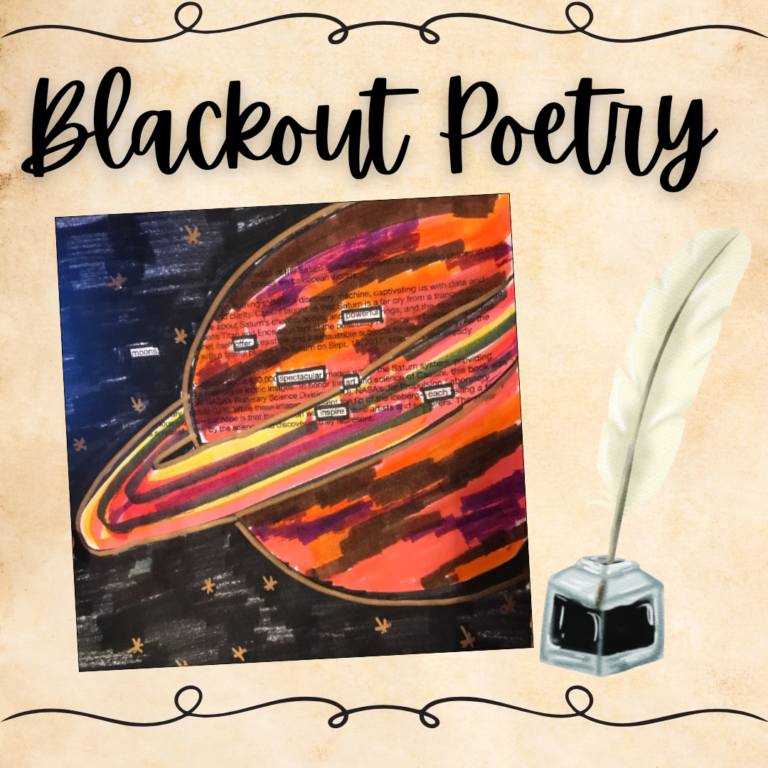
What if the words for the poetry were already on the page?
Blackout poetry uses an existing text and words are selectively marked out, leaving only those that the student feels are important to the poem they want to reveal.
This framework can feel safe and freeing to some kids, especially those who get a bit of nerves looking at a blank page.
Once words are blacked out leaving only those that form the student’s poem, use markers to draw a scene around the page, on top of the marked out text.
The creative possibilities with this format are endless! Grab an old book from a thrift store or a magazine (the pages with all text) for an easy start.
3. Illustrated Haiku
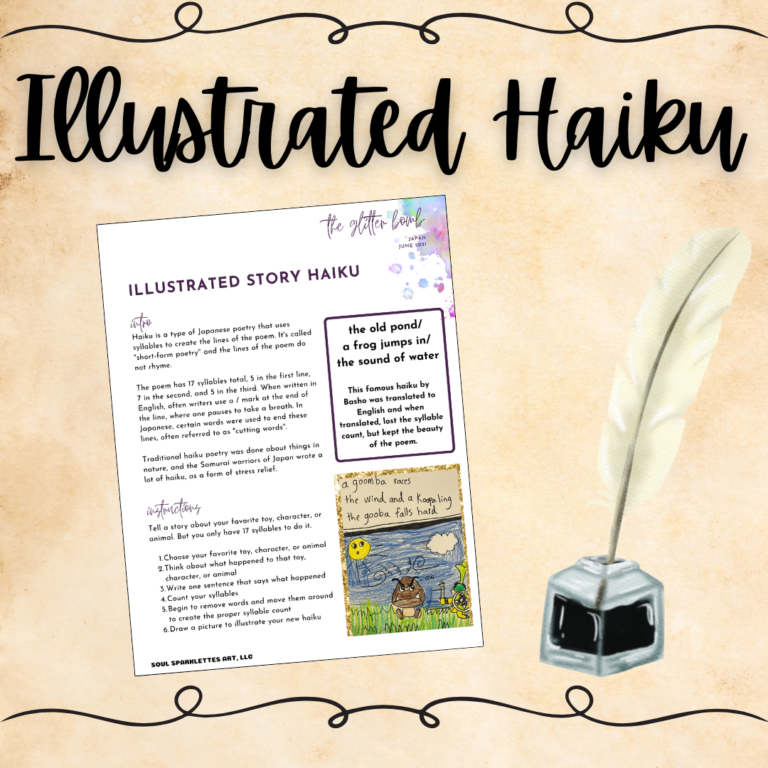
Some kids thrive with a framework of rules. Haikus for the win!
With this form of poetry, students count syllables and plan out each line to tell a story, traditionally involving an idea about nature.
Illustrating a haiku is a great way to enhance the brevity of three lines. Kids can stretch out into creative expression after leaning into the rules of their poem.
Pay special attention to the image here – it isn’t gently falling rain, it’s a Goomba from Super Mario! That’s right – give kids permission to create what they want to create for the best (and most hilarious) results.
Looking for more Art and Language Arts combinations?
We would love it if you’d share!
Don’t forget to tag us at @soulsparklettes on social media if you try these poetry and art combinations with your kids or students – we love to see what you create!
Are you looking to level up your homeschool writing? You’ll love Delicious Diner!
This writing course teaches kids how to use Canva to create their own diner, advertise, hire their staff, write their recipes and more. Kid-tested, kid-approved, and developed with kid-input so kids are excited to earn their badges and share their finished project with friends and family! Learn more right HERE.
